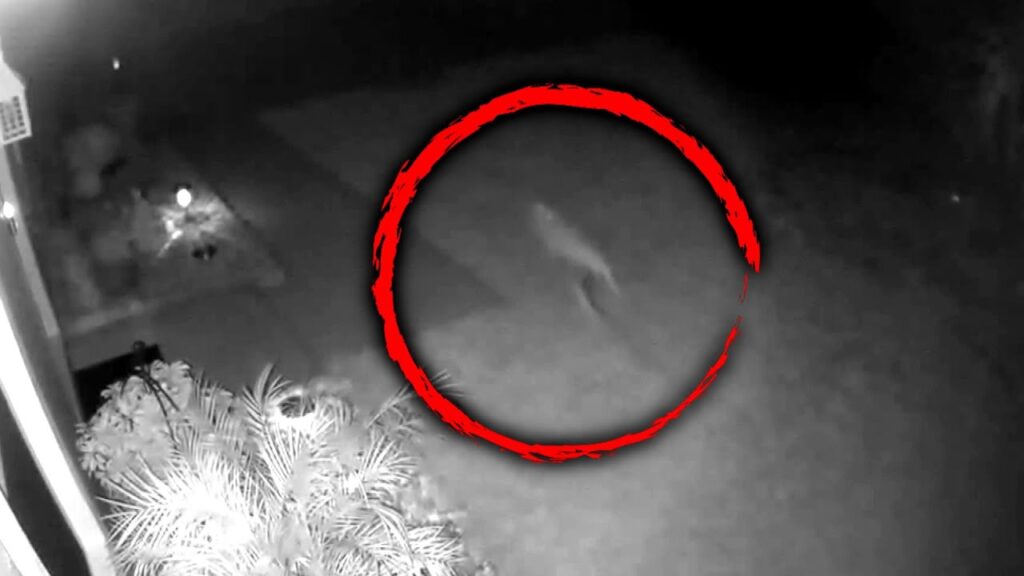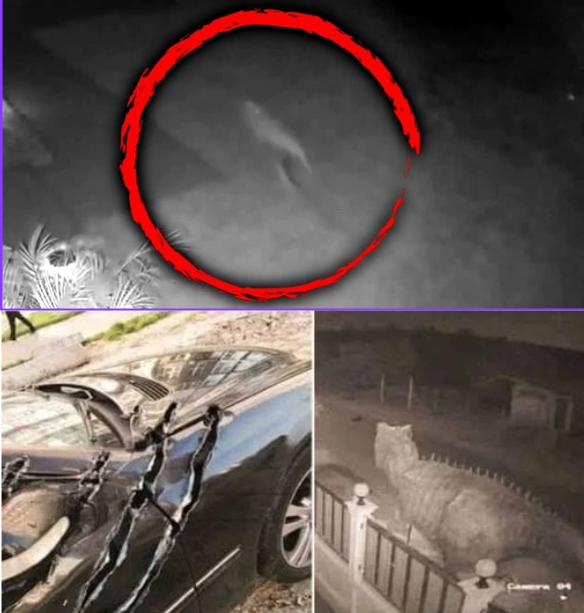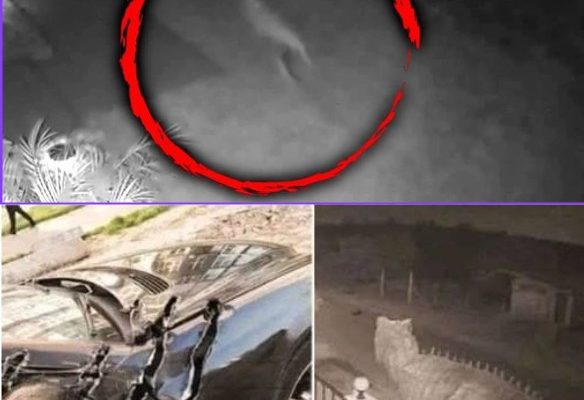The Viral Sensation That Roared: Dinosaur Destruction Video Shakes the Internet and Reality
Experience the excitement of the Dinosaur Destruction video, a viral hit that is shaking the internet. Delve into its effects on our understanding of reality.
Table of Contents
The interne
The internet, a place synonymous with fleeting trends and sensationalism, has been set ablaze by a video of such improbable ferocity that it’s managed to grip both casual scrollers and seasoned skeptics alike. The footage, raw and seemingly unfiltered, depicts a creature thought to have been extinct for millions of years: a massive theropod dinosaur, ripping apart a modern automobile with alarming ease. The viral video has sparked a maelstrom of reactions, ranging from wide-eyed astonishment to bewildered disbelief, raising questions about its authenticity, its implications, and ultimately, what it means for our understanding of both the past and the very real present.
The video, now widely circulated across social media platforms, appears to have been captured on a handheld device, lending it a shaky, almost amateurish quality. The visual content, however, is anything but amateur. It opens with a shot of a typical, suburban street, the kind that could be found in almost any town or city. A silver sedan, seemingly parked haphazardly near the curb, occupies the center of the frame. Then, the ground begins to tremble.
In an almost cinematic reveal, a massive dinosaur emerges into view. While the exact species is debated amongst internet paleontologists and armchair experts alike, its appearance bears a striking resemblance to a large theropod, perhaps a relative of the allosaurus or even a juvenile tyrannosaurus. Its powerful legs are muscled and defined, its dark green scales glistening under the midday sun. Its head, a study in bone and muscle, sports a powerful jaw lined with rows of razor-sharp teeth. And then there are its claws—huge, curved, and terrifyingly efficient.
The viewer watches in horrifying fascination as the dinosaur, seemingly provoked, lunges at the unassuming vehicle. With a series of earth-shattering roars, the creature begins its brutal dismantling. Its claws rake across the metal, tearing through the door panels like they were mere paper. The windows shatter under the force of its massive body, and pieces of plastic and glass go flying. The car, once a symbol of modern transportation, is reduced to a twisted wreck in a matter of seconds. The final scene shows the dinosaur standing triumphantly over the mangled remains, before abruptly disappearing from view.
The video’s sudden, and some might say, implausible appearance has triggered an unprecedented wave of speculation and debate. Across the internet, the video has been analyzed, dissected, and deconstructed frame by frame. Many skeptics point to the potential for CGI manipulation, citing advancements in visual effects technology that can now create almost indistinguishable fakes. Some even suggest that it might be an elaborate hoax designed to garner attention. Others, however, are taking the video with a grain of terrified seriousness, questioning whether it might be evidence of something more extraordinary, perhaps even unthinkable.
The Science and Skepticism: Separating Fact from Fiction (and Fear)
Paleontologists and dinosaur experts have been quick to weigh in on the matter, and their consensus has been largely skeptical. Dr. Eleanor Vance, a renowned paleontologist with decades of experience, stated in a widely shared interview, “While the dinosaur depicted in the video is remarkably well-rendered, there are several anatomical inconsistencies that immediately raise red flags. The gait seems somewhat off, and the scale seems exaggerated. Furthermore, there is absolutely no plausible scientific explanation for how a dinosaur of this size, from an extinct lineage, could suddenly reappear.”
Dr. Vance’s sentiment is echoed by others in her field. They highlight the fact that the fossil record demonstrates a clear extinction event, caused by a catastrophic asteroid impact approximately 66 million years ago. To suggest that such a creature could still exist undetected today defies both scientific understanding and common sense. Moreover, the energy requirements of a creature of that size and the lack of any evidence of such a population thriving in secret seem like insurmountable obstacles to the idea’s believability.

However, despite the strong scientific skepticism, a large segment of the public seems drawn to the video’s terrifying narrative. The sheer realism of the creature, combined with the chaotic destruction it leaves in its wake, taps into a deeply primal fear of the unknown. Many viewers, while acknowledging the potential for CGI manipulation, also admit to feeling a palpable unease while watching the footage, a sense that perhaps the impossible might be real. This psychological response, experts suggest, is fueled by the innate human fascination with monsters and the “what if?” scenarios that have populated our cultural narratives for centuries.
The Implications: Chaos and the Quest for Answers
The viral video has implications that stretch far beyond mere internet amusement. For starters, it has sparked a wave of conspiracy theories, each more fantastical than the last. Some theorists suggest it’s part of a secret government project, an attempt to harness the power of ancient DNA for unknown purposes. Others claim that the video is a leaked recording from a hidden research facility, perhaps one located in a remote corner of the globe.
The video has also fueled a growing sense of anxiety among the general populace. Social media platforms are now flooded with posts discussing safety concerns and expressing fears about the return of creatures thought relegated to the pages of textbooks. Many are demanding explanations from government officials and scientific communities, asking whether there is any real reason to be concerned about a potential dinosaur resurgence.

Beyond the fear and conspiracy, the viral video has also ignited a new wave of interest in paleontology and evolutionary biology. Suddenly, dinosaurs, once the domain of dry textbook discussions, have become the subjects of fervent debate. Online communities are springing up, filled with amateur paleontologists and armchair scientists, all eager to analyze, discuss, and share their own theories about the video’s validity. Educational websites and museums are reporting a surge in visitors, keen to learn more about the creatures that once roamed our planet. In an ironic twist, the fake video has provided a real boost to scientific awareness.
A Moment of Reflection: The Power of Storytelling and the Lure of the Impossible
Regardless of its authenticity, the viral dinosaur video serves as a powerful testament to the enduring power of storytelling. It taps into a deep well of human fascination with the fantastical, the unknown, and the impossible. In a world where the boundaries between reality and fiction are increasingly blurred, the video offers a glimpse into a terrifying, yet exhilarating, alternate possibility. It reminds us that even in the age of scientific advancement and technological sophistication, our imaginations still hold the capacity to be captivated by stories that defy logic and reason.
Ultimately, the truth behind the video may never be fully revealed. It might be a clever piece of CGI artistry, a carefully crafted hoax, or even something more inexplicable. What’s undeniable, however, is the impact it has had on our collective consciousness. It has reminded us that the lines between what we believe to be real and what we imagine can be surprisingly porous, and that sometimes, the most captivating stories are the ones that challenge our perceptions of the world around us.
Whether this particular dinosaur ever existed beyond the digital realm, its image has now been indelibly etched into the global imagination. It stands as a symbol of both our deepest fears and our boundless curiosity, prompting us to question not only the nature of reality but the very limits of our understanding of the universe itself. The viral video, in its peculiar way, has given the long-dead dinosaurs a chance to roar once more, and in doing so, has reminded us of the enduring power of a story well told, even if that story is entirely unbelievable. The question that remains is not necessarily if it’s real, but why are we so drawn to the idea of it being real.



